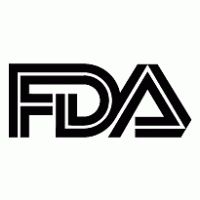Article
FDA Approves Mouthpiece to Treat Obstructive Sleep Apnea as Class II Device
Author(s):
The daytime-nighttime appliance named DNA, serves as a novel alternative to existing treatment options for mild-to-moderate obstructive sleep apnea.

A mouthpiece developed by Vivos Therapeutics that had previously been designated as a class I device for use as a palatal expander has now been cleared by the FDA as a class II device with a new indication for obstructive sleep apnea (OSA).
This decision concluded a 2-year wait after Vivos first submitted for this indication with prior device models and a rejection in 2021.
“This clearance is the culmination of years of pioneering clinical work,” Kirk Huntsman, Chairman, CEO, Vivos Therapeutics stated. “For the first time, the FDA has formally recognized the benefits of our proprietary core technology in our DNA appliance (without mandibular advancement) as an effective treatment for mild-to-moderate OSA in adults."
The daytime-nighttime appliance (DNA) serves as a novel alternative to existing treatment options for mild-to-moderate obstructive sleep apnea. According to the statement released by Vivos, the device addresses the root cause of obstructive sleep apnea and snoring by opening the airway and training the the tongue to rest properly, which facilitates nasal breathing instead of oral breathing.
It's important for patients to follow clinical instructions and additional protocols when necessary, but the can be effective on its own, or used alongside myofunctional therapy or continuous positive airway pressure (CPAP). While other nonsurgerical interventions for OSA are effective, treatment adherence and discomforting complications continue to be a barrier to their overall success.
Clinical data submitted to the FDA that supported this decision showed 28% of patients resolved OSA, 63% had an improved apnea hypopnea index (API) score by one classification, 86% had an improved airway size, and 97% showed an expanded palate, allowing proper placement of the tongue and therfore avoiding a common obstruction to the airway.
"The FDA now joins other international regulatory bodies in recognizing the efficacy of our patented technology in the reduction and resolution of many of the symptoms of OSA that result from a lack of development of the jaws and oral cavity," Huntman continued. "We believe the DNA treatment can be life changing for many OSA patients, and we look forward to continued market adoption of our expanded menu of treatments for this debilitating condition.”





